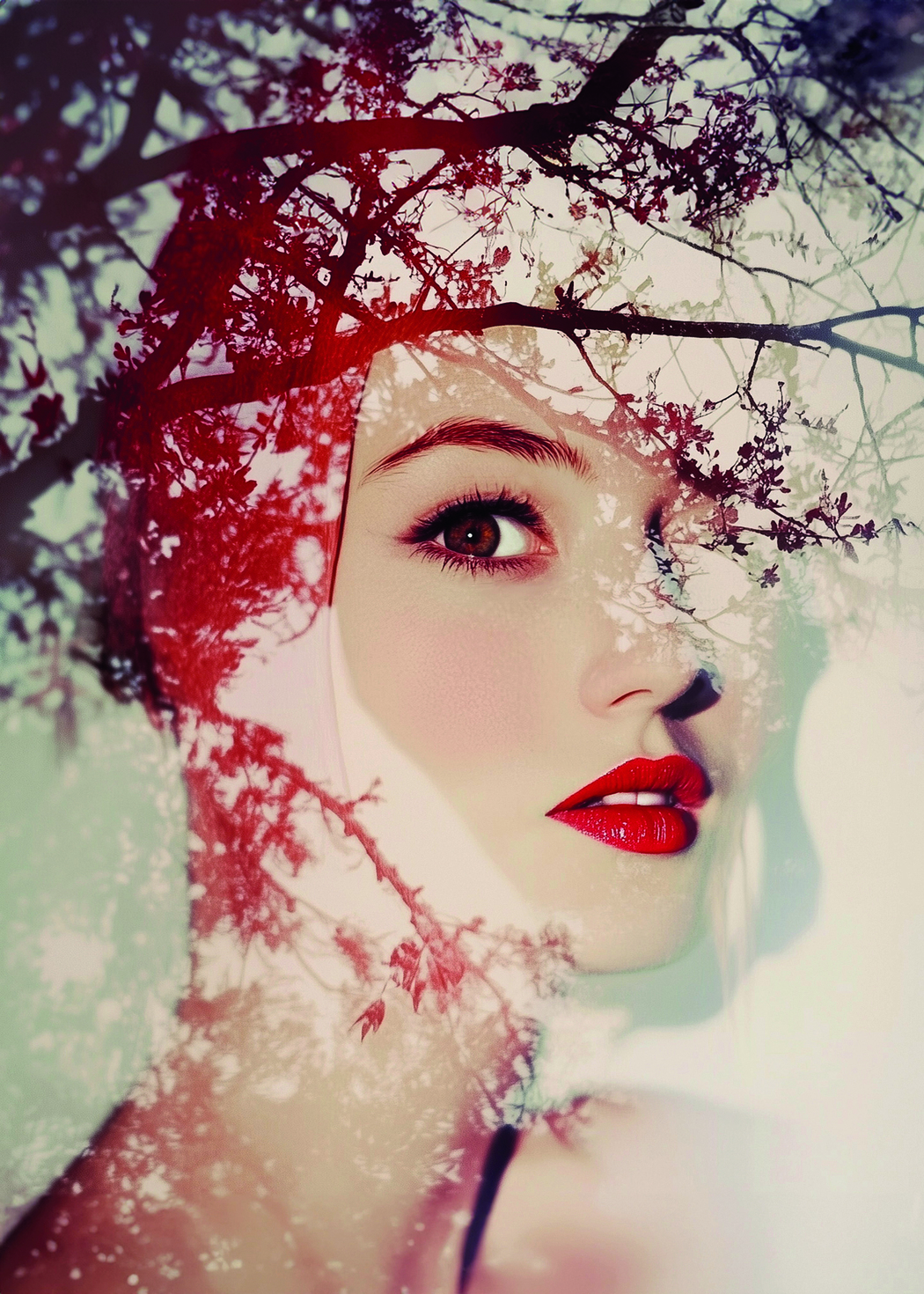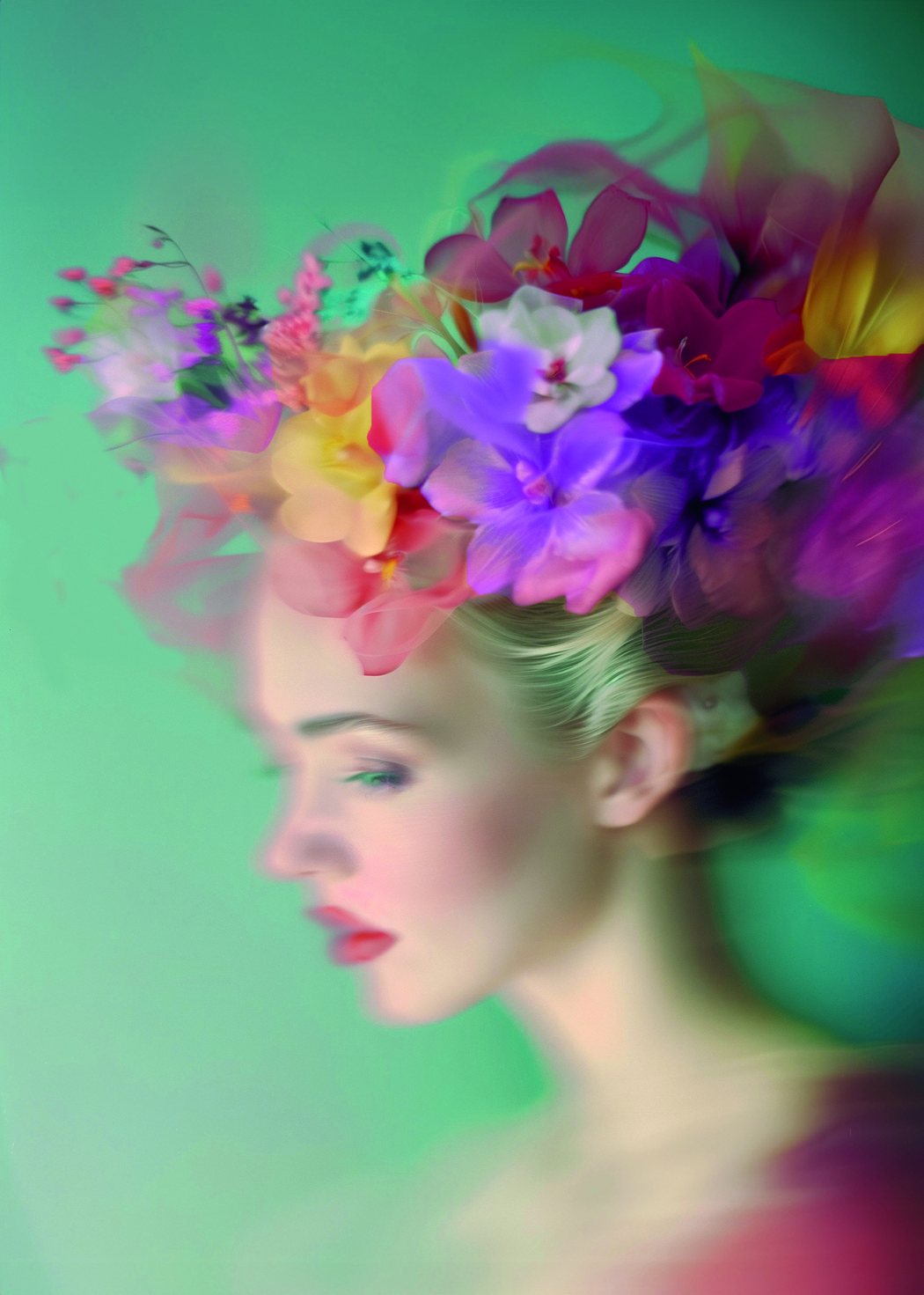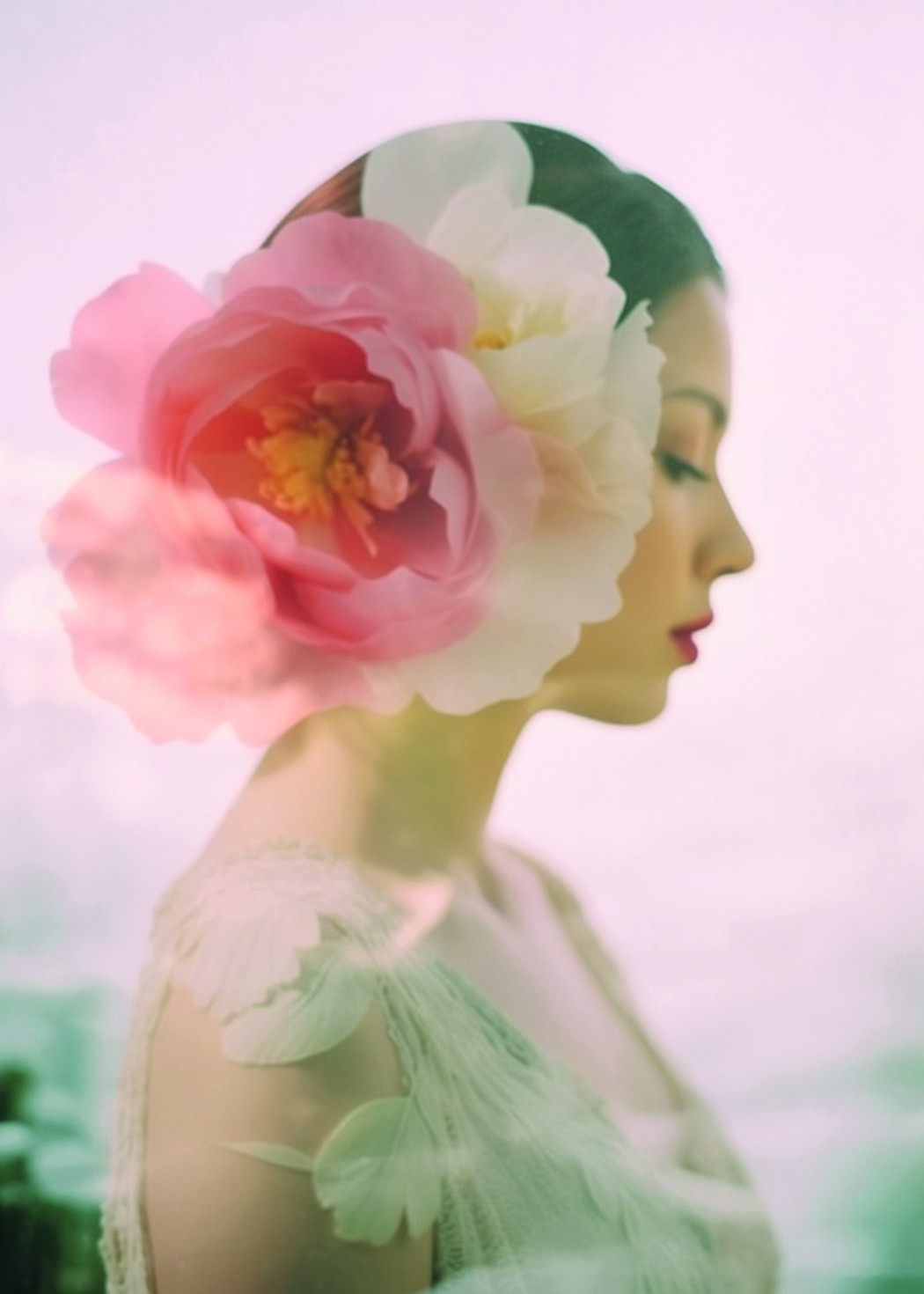Synne Kristine
Where do you live: Oslo, Norway.
Your education: BA in Psychology, BA in Art History (University of Oslo, Norway), MA in Art Museum and Gallery Studies (Newcastle University, UK), Degree in UX Design.
Describe your art in three words: Feminine, Ethereal, Emotional.
Your discipline: Multimedia Art and Digital Design.
Instagram
Your multicultural upbringing across different countries is fascinating. How do these diverse experiences shape your artistic style and vision?
Due to my father’s diplomatic career, I grew up abroad and lived in 10 different countries across the Middle East, Europe, Asia, and Africa. As an adult, I continued studying and working in cities like Dubai, London, and Prague before moving back to Oslo during the pandemic. These experiences have profoundly shaped my artistic vision, blending the exotic richness of Middle Eastern culture, the serene minimalism of Japanese design, and the vibrant wildlife of Africa. Themes such as nature, the desert, intricate patterns, and animals often appear in my work, reflecting the landscapes and traditions that have inspired me.
Your academic background spans Art History, Psychology, and Social Anthropology. How do these disciplines influence your approach to art and UX design?
I’ve always had a passion for art and loved to draw as a child, which naturally led me to work in the art sector before transitioning into communication and eventually web and UX design. My studies in Psychology and Social Anthropology reflect my deep interest in understanding people and cultures, helping me create emotionally resonant and inclusive designs and artwork. Meanwhile, Art History provided a strong foundation in visual storytelling, composition, and cultural symbolism—elements I blend with creativity and empathy to craft meaningful and impactful experiences.
 Synne Kristine | Bella | 2024
Synne Kristine | Bella | 2024
Having curated exhibitions in London and Oslo and managed brands in Dubai, how do these professional experiences inform your creative practice?
Working in galleries in Oslo and London allowed me to discover new artists and curate exhibitions that connected people with art. As a curator, I focused on storytelling—teaching others about the artworks and creating meaningful visitor experiences. This taught me how to engage audiences, a skill I continue to use in both my creative and digital work today. In Dubai, working as a brand manager in the hospitality industry introduced me to website design and digital branding. This sparked my interest in blending creativity with technology, which ultimately shaped my journey into UX design and digital art. These experiences have given me a unique ability to combine storytelling, strategy, and design in my creative practice.
What inspired you to explore the intersection of traditional art and artificial intelligence? How has AI changed your creative process?
At first, I was skeptical about using AI to create art, but once I tried MidJourney, it became an exciting process. Writing prompts and seeing the results felt like true collaboration—I bring the concepts and ideas, and AI offers its interpretation, creating something unique together. While some believe AI lacks creativity, I see it as a partner that enhances and expands my artistic process. AI has also opened new creative doors for me. Exploring digital art led me to video editing and motion graphics, which allowed me to bring my work to life. Blending traditional artistry with cutting-edge technology has been an inspiring journey, pushing me to grow as both an artist and a designer.
 Synne Kristine | Isadora | 2024
Synne Kristine | Isadora | 2024
Your work with AI filmmaking and AI fashion design is groundbreaking. Can you share more about the challenges and opportunities you face in these areas?
Both AI filmmaking and AI fashion design come with exciting opportunities and unique challenges. AI makes creating promotional videos faster and more cost-effective than hiring a full TV crew. However, the results can sometimes feel unnatural, and not everyone appreciates the “fake” look of AI-generated people. In AI fashion, the technology offers a more sustainable approach, allowing designers to experiment without waste. While the field is still in its early stages, its potential is immense as more people embrace it. Success in these areas comes from combining real-world skills with AI tools. Understanding camera angles, lighting, color theory, textures, and even sewing techniques makes the output more realistic and polished. As AI becomes further integrated into creative industries, the most impactful work will come from those who merge technical expertise with AI’s innovative possibilities.
As a Brand Ambassador for Refabric, you promote zero-waste pattern making. How does sustainability influence your artistic philosophy and projects?
Sustainability is central to my artistic philosophy and projects. As a Brand Ambassador for Refabric, an AI-powered fashion design platform, I’ve seen how constraints can inspire creativity, leading to more thoughtful and innovative designs. Refabric’s tools help designers minimize fabric waste, optimize material usage, and replace physical samples with digital prototypes. Additionally, AI-generated models of diverse sizes make it easy to test designs efficiently, reducing environmental impact. By integrating sustainable practices into my work, I strive to create with purpose and inspire awareness. Refabric’s cutting-edge solutions have been instrumental in advancing both creativity and eco-friendly innovation in the fashion industry.
 Synne Kristine | Alicia | 2024
Synne Kristine | Alicia | 2024
What advice would you give to emerging artists who want to experiment with AI in their creative practices?
AI is a powerful creative tool, but its true potential lies in combining it with other digital tools and artistic skills. While AI can produce stunning visuals, it often has limitations, such as anatomical errors (like too few or too many fingers) or incorrect text. To refine your work, it’s helpful to know editing software and have a solid understanding of composition, color theory, and artistic fundamentals. The more specific your prompts, the more personal and meaningful your creations will be. AI-generated images are gradually replacing stock photos, but much like stock images, they work best as a foundation. Many artists refine them further to develop their unique style. Embrace AI as a collaborator, experiment freely, and blend it with traditional or digital techniques to push your creativity to new levels.

Leave a Reply